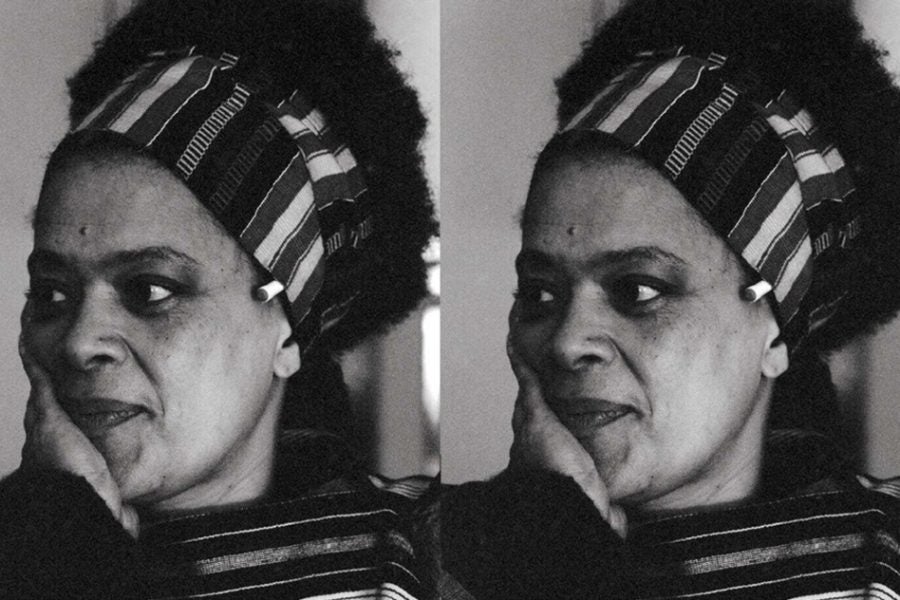
There’s a popular meme that gets traction around this time of year. It says, “You need at least three to five years of work experience and three references to make the Thanksgiving mac and cheese.” The notion is hilarious and relatable, because mac and cheese truly is that dish for so many of us. It is the side centerpiece, the casserole of consequence. Everyone wants a piece, and everyone’s got an opinion. This decadent pasta dish can be traced back to ancient Italy, but to Black families across the diaspora, macaroni and cheese is ours. We can thank James Hemings, a man enslaved by Thomas Jefferson, for bringing the accompaniment to American tables.
Macaroni and cheese as we know it dates back to Roman times. The earliest found mentions of a dish that combines pasta and fresh cheese can be traced to 160 BCE and Roman senator Marcus Porcius Cato’s treatise De Agri Cultura. From the beginning, macaroni and cheese was made for rituals and holidays, intended to delight a hungry gathering. Early popular versions of this layered dish were made with cinnamon and sugar before savory versions became the standard.
By the 18th century, the French had adapted the meal into the creamy version we know today.
Italian-based culinary historian Karima Moyer-Nocchi is the author of he Eternal Table – A Cultural History of Food in Rome. She has written extensively on the history of pasta and is currently working on a definitive book on macaroni. Her research reveals that the dish that has endured and evolved, appearing in cookbooks throughout the 12th and 13th centuries. It was also mentioned in English cookbooks from as early as 1390.
Through the ages, the name has changed, although the concept stayed the same. Pasta layered with cheese has been known as “placenta,” “lasanis,” “lasagne,” “makerouns,” “Roman macaroni,” and “vermachelly.” By the 18th century, the French had adapted the meal into the creamy version we know today. From 1784 to 1789, Thomas Jefferson visited Paris and returned to America with two cases of macaroni, serving the dish to visiting constituents. This decadent dish impressed American palates and became a showpiece on the tables of the founding fathers. Which brings us to the significant legacy of an enslaved cook named James Hemings.
Thanks to a 1948 Budweiser ad that erroneously pronounced him “our first spaghetti maker,” Thomas Jefferson has come to be portrayed as a sort of founding foodie whose travels diversified his appetite. He has been depicted as being responsible for the introduction of ice cream, French fries and macaroni and cheese into American diets, with the Monticello library sharing many documents about macaroni.
“Hundreds of people were enslaved at Monticello, including members of the Hemings family.”
In 1793, Jefferson had a pasta press shipped to his home and there are notes on the pasta machine in Jefferson’s own writing. Despite the evidence of these documents and a recipe for macaroni in Jefferson’s own hand, Monticello acknowledges that this recipe was likely dictated to him by one of his chefs. It is said that Jefferson only entered the kitchen to fix the clock, and the meals served at his popular dinners were all created by a talented team of enslaved cooks. They were responsible for the proper preparation and the consequent popularity of the dishes served. They deserve acknowledgement and praise for their lasting contributions to food culture in America.
Hundreds of people were enslaved at Monticello, including members of the Hemings family. Elizabeth Hemings was the matriarch of the family that came to comprise a third of the population at Monticello. Of her eleven children, we know the most about her daughter Sally and her son James, the latter of whom worked as a valet before being sent to France with Jefferson for instruction in “the art of cookery” in 1784. By 1787, he had become Jefferson’s chef de cuisine in France.
There is much to learn about the life of James Hemings. On Netflix, the award-winning “High on the Hog” documentary series takes viewers into the kitchens at Monticello, where his mac and cheese recipe is prepared by culinary historian Dr. Leni Sorensen and enjoyed by Gayle Jessup White, community engagement officer at Monticello and a descendant of the Hemings family. There, before the stew stove and hearth in the kitchens at Monticello, they discuss the history of mac and cheese, particularly James Hemings’ role in helping popularize it in the United States. Additionally, the documentary “Ghost in America’s Kitchen” by Chef Ashbell McElveen takes a closer look at Hemings’ many undeniable historic contributions, rightfully positioning his legacy as America’s culinary founding father.
Article continues after video.
“On social media you will find videos and tweets claiming that Hemings invented macaroni and cheese, despite the fact that the earliest documented recipes appeared in cookbooks hundreds of years before his birth.”
“The most important thing to know about James Hemings — and I encourage them to watch the documentary on Prime done by my friend Chef Ashbell; is that he played an active role in the synthesis between European sensibilities, American ingredients and African-Virginian know-how and culinary intellect. Hundreds of years of knowledge poured through his hands into the food he created. He created Southern fine dining and gave it a birth date,” Michael Twitty, author of “The Cooking Gene: A Journey Through African-American Culinary History in the Old South,” says to ESSENCE.
On social media you will find videos and tweets claiming that Hemings invented macaroni and cheese, despite the fact that the earliest documented recipes appeared in cookbooks hundreds of years before his birth. However, we can thank Hemings for helping to popularize the dish stateside. The first recorded mention of mac and cheese being enjoyed at Monticello was in 1802, and we know Hemings likely had made the dish there prior to his death one year earlier.
Adrian Miller, author of “Black Smoke: African Americans and the United States of Barbecue” and two-time Beard Foundation winner explains Hemings’ impact thusly: “It’s a story that I think is a metaphor for African-American cooking, and our experience in this country. It’s the story of innovation, and virtuosity. Often African-American cooks get overlooked for our contributions. So, I think to even know that there was this African-American man trained in classical European cooking who could make this dish is a story of triumph and of itself. I think that’s why this story endures.”
Karima Moyer-Nocchi notes that although macaroni and cheese originated as Roman party food, it is beloved and embraced by cultures around the world and a loving sense of ownership abounds. Macaroni pie is a dish in Scotland (where it’s made with a hot water crust pie shell). In my homeland of Trinidad and Tobago, it’s a sturdy, baked casserole served weekly as a centerpiece of our Sunday lunch tradition. Moyer-Nocchi also informed me of an Indonesian version of mac and cheese that was brought in through the Dutch. The combination of noodles and dairy served at American tables resonates in cultures around the world.
“It’s a question of culinary identity,” says Moyer-Nocci. “We use food to demarcate ‘our group’ and signify membership. Foods within our culinary identity make us feel like we belong to something meaningful that is larger than ourselves. It’s our piece of eternity.”
“The most important advice I can give is don’t mess with family recipes without approval, especially at holiday time!”
For first timers preparing a dish of the baked gooey goodness, the anxiety is surely mounting. How do you perfect a dish so highly anticipated and sure to be scrutinized? The OG recipe by James Hemings was made with noodles boiled in a mix of half milk, half water, so there’s one way to begin: adding silkiness to your dish and paying homage to the chef who helped to popularize it in the U.S.
Now, if you’ve got an old family recipe, follow it. It’s probably not the best time to experiment, unless you’re prepared to be roasted by your relatives and social media at large. “The most important advice I can give is don’t mess with family recipes without approval, especially at holiday time!,” implores Michael Twitty. So that Caribbean macaroni pie with the colorful pimentos that looked good on the Gram? Maybe save that for a regular Sunday brunch. For Thanksgiving, it’s about tradition.
If you’re still apprehensive, Adrian Miller advises a rehearsal before your presentation. “I suggest maybe doing a practice run and having an auntie or two test it and say, “Oh no baby, you need to do this this or that.” It’s just a matter of finding that nice spot,” he tells us. “I always tell people to go for the Sunday casserole approach, not the cheese sauce with noodles approach, because it’s a special occasion, and so this deserves some extra care.”
James Hemings’ culinary skills helped to elevate cooking in the kitchens at Monticello, and the techniques he perfected were passed down through the ages. So in many ways, Hemings left a significant impact on American history. The next time you bite into a creamy delicious bite of mac and cheese, remember James Hemings and the flavor he brought to the side dish we’re so passionate about.







